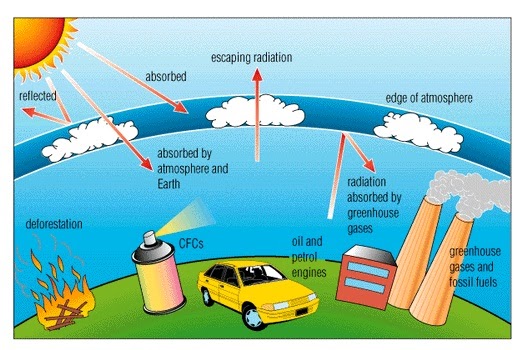Introduction:
Environmental issues have become a global concern, with their impacts felt across the planet. This article aims to explore the causes of environmental problems and propose potential solutions. By raising awareness and promoting sustainable practices, we can work towards a healthier and more sustainable planet.
Climate Change:
Climate change is primarily caused by greenhouse gas emissions, deforestation, and industrial activities. This section will discuss the role of human activities in climate change and the need for reducing carbon emissions, transitioning to renewable energy sources, and adopting sustainable land management practices.
Pollution:
Pollution, including air, water, and soil pollution, has detrimental effects on ecosystems, human health, and biodiversity. This section will address the sources of pollution, such as industrial waste, vehicle emissions, and improper waste management. It will also explore solutions like promoting clean technologies, implementing stricter regulations, and adopting sustainable waste management practices.
Loss of Biodiversity:
The loss of biodiversity is mainly caused by habitat destruction, deforestation, and overexploitation of natural resources. This section will highlight the importance of biodiversity and its role in maintaining ecosystem balance. It will discuss the need for habitat conservation, afforestation initiatives, and sustainable resource management to protect and restore biodiversity.

Water Scarcity:
Water scarcity is a pressing issue in many parts of the world, exacerbated by factors like overconsumption, pollution, and climate change. This section will explore sustainable water management practices, including water conservation, rainwater harvesting, and wastewater treatment. It will also emphasize the importance of community involvement and responsible water use.
Waste Management:
Improper waste management, including excessive production and inadequate recycling, contributes to environmental degradation. This section will discuss the importance of waste reduction, recycling, and composting. It will also address the need for extended producer responsibility and the promotion of a circular economy to minimize waste generation.
Deforestation:
Deforestation leads to habitat loss, soil erosion, and contributes to climate change. This section will highlight the causes of deforestation, such as agricultural expansion and logging, and explore solutions like sustainable forestry practices, reforestation programs, and the protection of endangered ecosystems.
Sustainable Consumption and Production:
Consumerism and unsustainable production practices put immense pressure on natural resources and contribute to environmental problems. This section will emphasize the importance of sustainable consumption choices, promoting eco-friendly products, and encouraging businesses to adopt sustainable production methods.
Conclusion:
Environmental issues pose significant challenges, but by addressing their root causes and implementing sustainable solutions, we can mitigate their impacts. This article has highlighted the causes of environmental problems and proposed potential solutions. By adopting sustainable practices, promoting awareness, and advocating for policy changes, we can work towards a greener and more sustainable future.
I’m here to provide you with some information on sustainable technologies that can help reduce humanity’s carbon footprint and promote sustainable development.
Renewable Energy:
Renewable energy sources, such as solar, wind, and hydroelectric power, are becoming increasingly important as the world transitions away from fossil fuels. These clean energy sources not only help reduce carbon emissions but also provide sustainable and reliable energy for various industries.
Electric Vehicles:
Electric vehicles (EVs) are becoming more popular as concerns about climate change and air pollution continue to grow. EVs are powered by renewable energy sources and have zero tailpipe emissions, making them a cleaner and more sustainable alternative to traditional gasoline-powered vehicles.
Sustainable Transportation:
Sustainable transportation solutions, such as electric vehicles, public transportation, and biking, can significantly reduce carbon emissions and promote sustainable development. Encouraging the use of these alternatives can help decrease reliance on fossil fuels and promote a healthier environment.
Waste Management:
Proper waste management is crucial for reducing carbon emissions and promoting sustainable development. Technologies such as recycling, composting, and waste-to-energy can help reduce waste sent to landfills and minimize greenhouse gas emissions.
Sustainable Agriculture:
Sustainable agriculture practices, such as organic farming, permaculture, and precision agriculture, can promote soil health, biodiversity, and efficient water use. These practices also reduce the use of harmful chemicals and promote sustainable food production.
Green Building Design:
Green building design involves the use of sustainable materials, energy-efficient systems, and renewable energy sources to minimize the environmental impact of buildings. This can include features such as insulation, passive solar design, and rainwater harvesting.
These are just a few examples of sustainable technologies that can help promote sustainable development and reduce carbon emissions. By incorporating these technologies into our daily lives and encouraging their use in our communities, we can take steps towards a more sustainable future.























